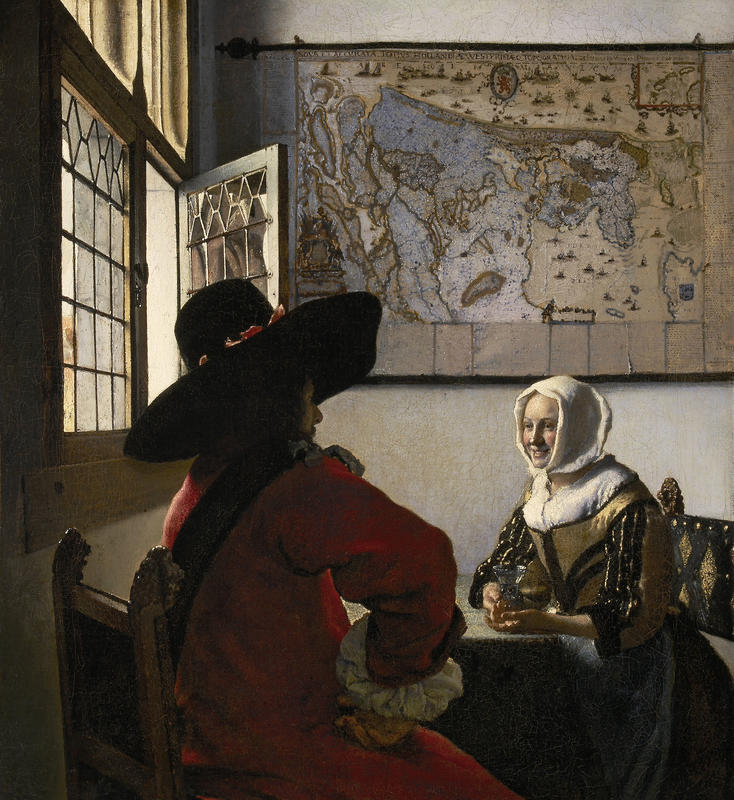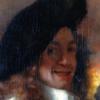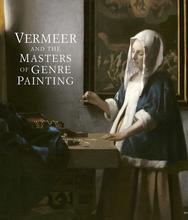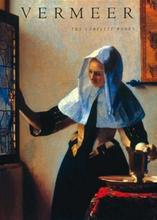More about Officer and Laughing Girl
- All
- Info
- Shop
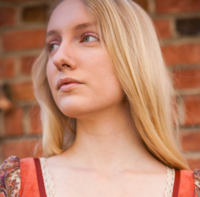
Editor
Only Vermeer, as is perfectly demonstrated by Officer and Laughing Girl, could paint a scene that is so infused with light yet STILL manages to be opaque to the viewer.
While less date-rapey than his similarly themed work The Glass of Wine, Vermeer’s Officer and Laughing Girl is similarly enigmatic while still appearing straightforward. We’ve got an officer who has clearly swaggered his way on up to this young lady’s door, possibly taking her by surprise (as she’s still wearing her apron), and gotten himself invited in for a glass of wine and maybe even a proverbial cup of coffee. Dude looks downright cocky while he mansplains to, I mean, regales his smiling companion with his experiences. She seems perfectly content to listen to him, though, and perhaps that’s because his finery is so on fleek. His uniform and sash indicate he is an officer, and the brilliant red of his attire, while not associated with any particular infantry (as there was no single, unified Dutch army, and therefore, no one set of colors) projects power, drama, and vigor. His hat is made of coveted beaver pelt, which was at the center of a vast trade network spanning the Atlantic and Baltic Seas all under the control of the Dutch West India Company. Thus, the expensive hat came to embody 17th century ideals of Dutch masculinity and prowess on the world economic stage. There was no better way to show national pride than to wear a beaver on your head, and this is reinforced by the way his hat overlaps the map of Holland and Friesland on the wall.
But really, it is the relationship of the two figures that is being painted here; their chairs face each other, their bodies seem in imminent danger of touching, and the lines converge on a vanishing point that hovers in midair where their gazes meet. But precisely what sort of relationship this is is where the ambiguity lies. It’s possible that this is the same girl, modeled after his wife, from his earlier work Girl Reading a Letter, and that this painting depicts a joyful reunion of lovers happily breaking into some vino. Young men and women were allowed tremendous freedom in courtship (ok, tremendous by Victorian standards), and it would not be entirely unusual for a respectable young couple to be alone in each other’s company without the presence of a chaperone.
But the Dutch also loved depictions of prostitutes. They loved the ribald, obvious ones AND the elegant, subtle ones. The fact that her hand’s palm lies open may indicate she is asking for payment. Because why else would she endure his talking with such a big smile on her face? (Oh right, wine.) Also, on a more poorly dressed subject, her laughter would instantly have been taken as a sign of looseness. Furthermore, the positioning of figures, with a back to the viewer, is a common device used by Vermeer’s contemporaries whose work he knew to create more depth, and is especially found in interior scenes of taverns and brothels by Pieter de Hooch. But whether or not this girl is giving this man the time of day because she wants his heart, his money, or both, is not certain. Vermeer ain’t giving out any answers. Instead, he skillfully makes the viewer feel like he’s privately eavesdropping on a conversation, without actually answering any of the questions eavesdropping would typically afford.
Sources
- Brook, Timothy. Vermeer’s Hat: The Seventeenth Century and the Dawn of Global Trade. New York: Bloomsbury Press, 2008.
- Gowing, Lawrence. Vermeer. New York: Harper and Row Publishers, 1952.
- Schama, Simon. The Embarrassment of Riches: An Interpretation of Dutch Culture in the Golden Age. New York: Vintage, 1987.
- Vergara, Lisa. “Women, Letters, Artistic Beauty: Vermeer’s Themes and Variations.” In Love Letters: Dutch Genre Painting in the Age of Vermeer, edited by Fronia W. Simpson, 50-62. Dublin: National Gallery of Ireland, 2003.
- Villa, Renzo. Vermeer: The Complete Works. Milan: Silvana Editoriale, 2012.
- Wheelock Jr., Arthur K. Jan Vermeer. New York: Harry N. Abrams, 1981.
- “Officer and Laughing Girl.” Essential Vermeer. Accessed Septemer 26, 2017, http://www.essentialvermeer.com/catalogue/officer_and_laughing_girl.htm….
Featured Content
Here is what Wikipedia says about Officer and Laughing Girl
Officer and Laughing Girl, also known as Officer and a Laughing Girl, Officer With a Laughing Girl or, in Dutch, De Soldaat en het Lachende Meisje (literally, The Soldier and the Laughing Girl), is an oil painting on canvas executed ca. 1657 by the Dutch artist Johannes Vermeer. Its dimensions are 50.5 by 46 cm. It belongs to the Frick Collection in New York, along with Girl Interrupted at Her Music and Mistress and Maid.
Officer and Laughing Girl includes many of the characteristics of Vermeer's style. The main subject is a woman in a yellow dress, light is coming from the left-hand side of the painting from an open window, and there is a large map on the wall by Balthasar Florisz. van Berckenrode. Each of these elements occur in some of his other paintings, although this painting differs slightly with the man also sitting at the table. Art historians, who have suggested conflicting interpretations of the work, believe that a painting by Gerard van Honthorst inspired the composition and that Vermeer may have used a camera obscura to create the perspective in this painting.
Check out the full Wikipedia article about Officer and Laughing Girl

